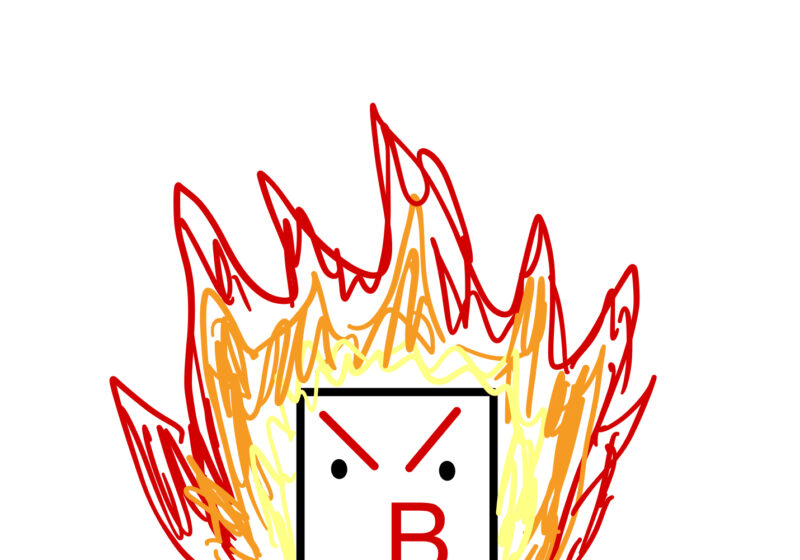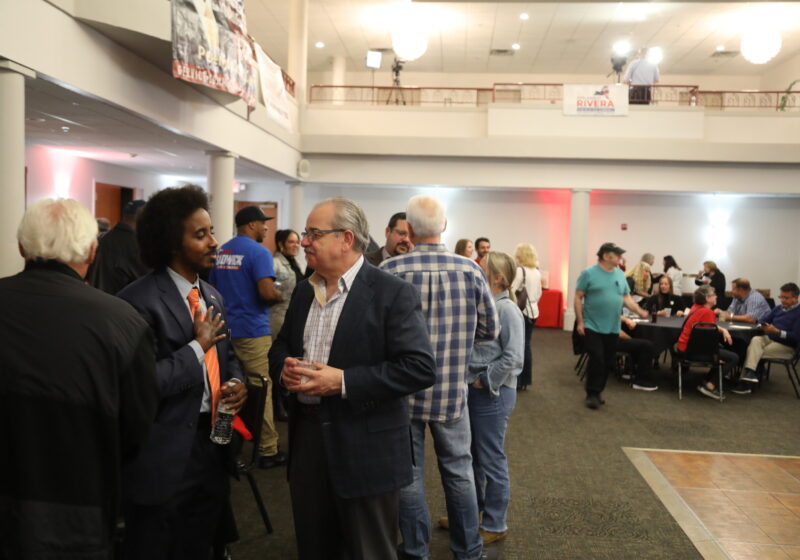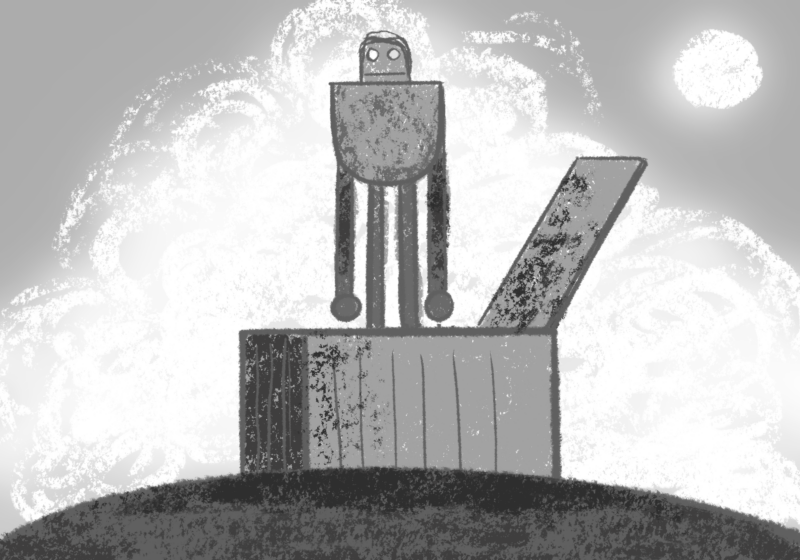Nicola Mann, originally from England and a third year Doctoral Candidate at UR in the areas of Visual and Cultural Studies, has created an intriguing and illuminating artistic exhibit displaying the consequences of social upheaval in Cabrini Green, a notorious housing project located on the North Side of Chicago.
Mann developed her idea for the exhibit, “Notes from the Underground,” about a year ago after taking a Representation of Modern City class and studying and researching the urban crisis of Cabrini Green. Coupled with Daniel Roth’s 2004 piece entitled “Cabrini Green Forest,” which focuses on a “mythical forest” captured underground in a tunnel connecting Cabrini Green and the Metropolitan Correctional Facility, Mann constructed the exhibit to display the housing project as its own separate world, one that is unknown to many other worlds surrounding it.
Cabrini Green is currently the subject of a massive demolition project known as the “Plan for Transformation.” This project intends to focus on “urban renewal” and has consequently already removed 37 of the 53 original high rise housing buildings in the neighborhood.
As a result, upwards of 60,000 inhabitants of Cabrini Green have been re-located (or as Mann prefers, dis-located) to what Mann describes as “even more violent communities” outside of Cabrini Green. Most of these people suffered a terrible ordeal known as “root shock,” which is a term used for the personal shock borne by people who are forced out of their “comfort zones” and away from their only known friends and support systems.
The main medium for most of Mann’s pieces is tiny wooden beads, which are meant to represent the delicate intricacies of a neighborhood torn apart. This neighborhood, seemingly hidden to those playing a part in destroying it, is represented by thousands of little beads, “each depending on the next for support and yet perilously close to collapse.” The beads serve in the sculptured pieces as a means of displaying the neighborhood in an open space (the Art and Music Library) for all to see; they are “relics immortalizing street parties, family connections and community spirit.”
Consisting of nine separate pieces, the exhibit depicts the story of the neighborhood’s experience with “root shock” and fighting back against social mayhem.
“Root Shock” is, in fact, the name of the first piece that my eyes were drawn to: a huge wall mural with a noticeable red sign in the middle reading “Heneghan Wrecking Crew.” It is surrounded by darker colors of forest green, brown and black.
The mural also depicts a single skyscraper housing unit in what appears to be a wild forest setting. Springing from the forest are massive, spindly, out of control roots and tree branches engulfing the sign and moving toward the building.
The tree nearest the unit has red leaves, mirroring the red of the sign, which, I believe, symbolize the confusion of the roots of the tree closest to the housing unit that is threatened to be torn down, pushing its residents out of their home. The sporadic roots cover the mural in swirls of confusion, symbolizing the confusion of dislocated families.
There is also a representation of a typical farmer’s “market stand” in the lower left hand corner of the mural. The stand seems to represent a close knit common community. As expected, this symbol of community was also partially obscured by confused roots.
What makes this piece of art so amazing, however, is the medium used to construct it. While the other eight works consisted of beads, the entire mural was created with various colors of duct tape. The intricacies of the mural were unbelievable, considering that all of the minuscule leaves, roots and rocks were cut and formed individually from pieces of duct tape. The artist says that her reason for using this medium was to convey the idea of “packing up” and moving away from home as residents of Cabrini Green were being forced to do.
Two sculptures on the floor caught my eye after the mural. The piece closest to the viewing windows of the gallery is entitled “Holding” and looks as though a wave of beads is cascading away from its core, representing “transitioning” and groups “on the edge of collapse.”
The second piece, “Brave Face,” represents the community’s resistance to the “Plan for Transformation” and the bravery shown by those forced out of their homes. This piece, too, was constructed almost entirely of small wooden beads supporting one another.
The next piece I noticed looked like a cage protruding from the back wall of the gallery. Upon closer inspection, one can see small fleur-de-lis fastened to the front. Mann explained to me that once again, this piece, particularly the fleur-de-lis, represents the brave face on top of collapse.
Finally, there are four small wall pieces to examine. Three of them, “William Green Homes,” “The Woods (1)” and “The Woods (2),” show small, simple homes surrounded and protected by the trees and “beads of society.” The fourth small piece is called “Red Tree,” which I felt represented the “confused” tree; this piece seems to depict a large red tree overpowering what appears to be a representation of the housing project of Cabrini Green behind it.
Overall this project is powerful and moving, well thought out and carefully constructed. In person, Nicola Mann is a delight to speak with and an enthusiastic artist willing to answer questions. When I had trouble interpreting the meanings of some of the major art pieces, she wasted no time in clarifying exactly what she meant to represent.
Surprisingly, the entire exhibit (which is still a work in progress) is extracurricular work for this interesting young woman. However, she does hope that eventually her topic will develop into some form of a thesis for her to expand upon as she finishes up her post-graduate studies.
Nicewicz is a member of the class of 2009.




